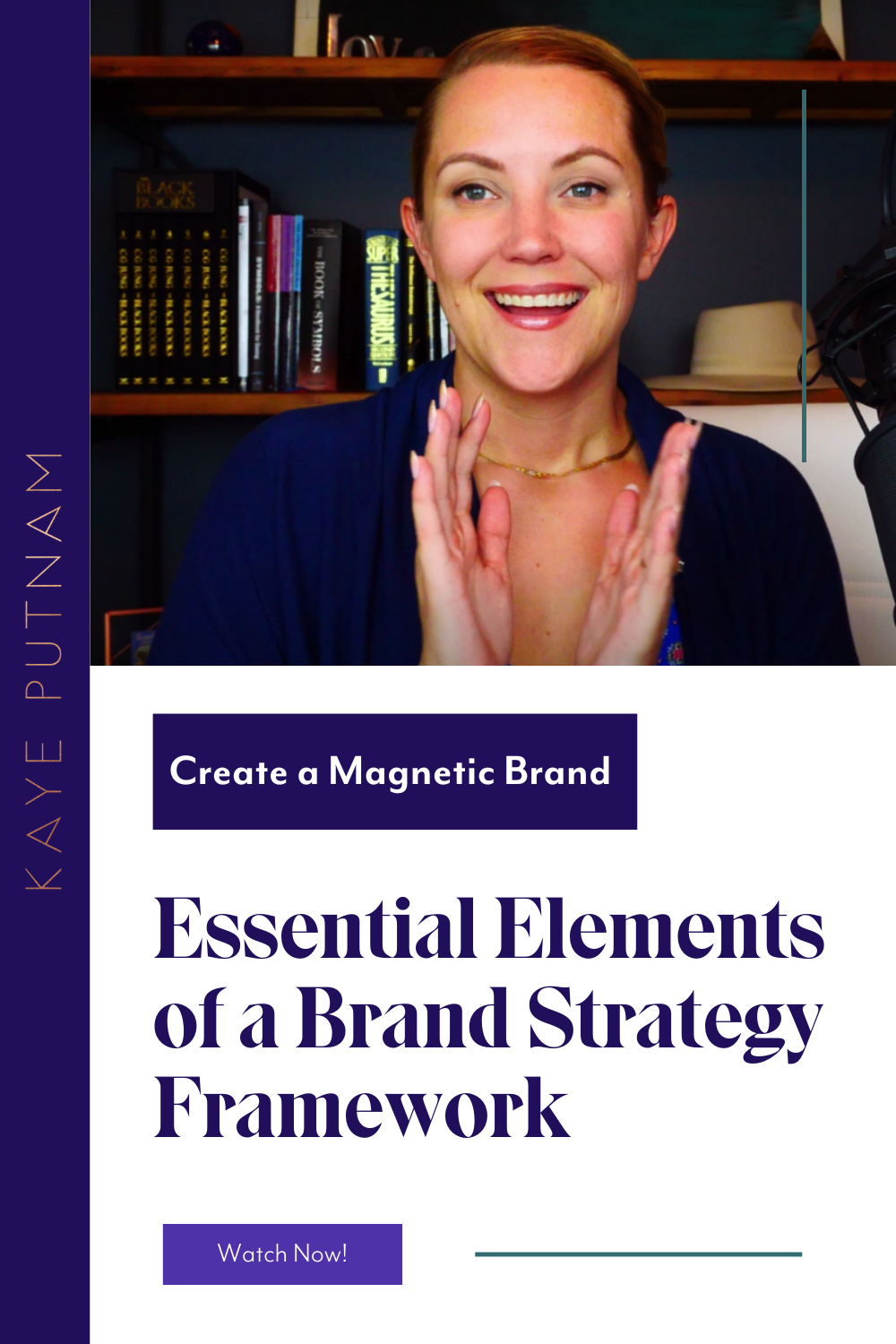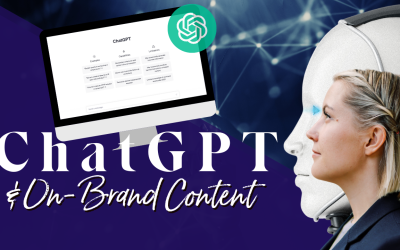Are you ready to build a visionary, impactful, personality-led brand?
In this vlog, we’re going to lay the groundwork and take you behind the scenes with a Brand SourceBook to show you exactly what it takes to create a brand strategy that stands out from the crowd.
We’ve talked about it before, but it’s worth repeating – – clarity and awareness of what you stand for is crucial when brining your brand to the market. Without it, you’re just throwing spaghetti at the wall and hoping something sticks. This will help you understand exactly what it takes to build a brand strategy that captures your unique personality and message.
Are you ready to dive in? Let’s gooooo! 🚀
Foundation: Brand Strategy
The Foundation is probably the *most* important part of your Brand SourceBook. This section serves as the cornerstone and guiding principles for the brand’s identity, ensuring consistency and cohesion across all brand-related activities.
So, what is on the foundation page?
- Core Idea
- Current Goal
- Who We Serve
- The Result
- Core Question
- How They Are Different
- Cultural Context
- Brand Character
- Point of View
- Brand Principles
- Manifesto
- Brand Credibility
- Brand Enemies
Curious as to what each section entails? Check out the video to get an in-depth explanation. ☝️☝️
Words: Brand Voice
The Words section of the Brand SourceBook holds significant importance in shaping the brand’s communication and establishing its unique voice. Here is a summary of the key elements within this section:
💫 Tone of Voice: The brand’s tone of voice sets the overall style and attitude of its communication. It defines how the brand sounds and the emotions it evokes when interacting with its audience.
💫 Brand Vocabulary: This includes a curated list of words that align with the brand’s identity and messaging. It establishes a consistent language that reflects the brand’s values, personality, and positioning.
💫 Words/Phrases I Use: This highlights specific words and phrases that are preferred or encouraged to be used in the brand’s communication. It ensures consistency and reinforces the brand’s unique voice across all touchpoints.
💫 Not to Use: This provides guidelines on words or phrases to avoid, ensuring that the brand’s communication remains aligned with its values and avoids any potential misunderstandings or misinterpretations.
💫 Stories: Brand stories are powerful tools for connecting with the audience. This section outlines key narratives that reflect the brand’s values, or customer success stories. These stories help humanize the brand and foster a deeper emotional connection.
💫 Archetype Stories: Archetypes represent universal patterns or characters that resonate with people. This section explores the brand’s archetype(s) and provides storytelling guidance that aligns with those archetypes, reinforcing the brand’s personality and appeal.
💫 Content Themes: This outlines recurring themes or topics that the brand’s content should revolve around. It ensures consistency and provides a framework for creating relevant and engaging content that aligns with the brand’s positioning and resonates with the target audience.
💫 Humanizing Topics: This suggests specific topics or areas of focus that help humanize the brand and make it relatable to the audience. It encourages the brand to share personal stories, insights, or experiences that showcase its authenticity and build trust.
💫 Phrases I Say: This section includes specific phrases or catchphrases that are associated with the brand. It helps in creating memorable taglines, slogans, or brand expressions that reinforce the brand’s identity and messaging.
💫 Style Choices: Style choices encompass elements such as grammar preferences, punctuation guidelines, sentence structure, and formatting rules. They ensure consistency in written communication and help maintain a cohesive brand voice.
Design: Brand Identity
The design section of a Brand SourceBook plays a crucial role in defining and maintaining a consistent visual identity for a brand. Here is a summary of the key elements within this section:
✨ Moodboard: A mood board visually represents the desired look and feel of the brand. It captures the overall aesthetic, mood, and visual inspiration that align with the brand’s identity, helping guide the design direction.
✨ Logos: The section includes the brand’s primary logo and any alternate logos.
✨ Primary Colors: This highlights the brand’s primary color palette, specifying the exact colors, color codes, and their intended usage. Consistent color usage helps establish brand recognition and evoke specific emotions or associations.
✨ Additional Logos/Graphics: If the brand has additional logos, graphics, or variations, this section provides guidelines on their usage, maintaining consistency while allowing for flexibility in different contexts or applications.
✨ Accents/Textures: Accents and textures add depth and visual interest to the brand’s design. This section outlines specific accents, patterns, or textures that complement the brand’s visual identity, providing guidance on their incorporation into various design elements.
✨ Fonts: Brand typography is essential for maintaining consistency and readability. This section specifies the brand’s preferred fonts, including primary and secondary typefaces, font sizes, and styles, ensuring a cohesive visual language across all brand materials.
✨ Headlines: Headlines play a vital role in grabbing attention and conveying key messages. This part provides guidelines for headline styles, formats, lengths, and recommended practices to maintain consistency and effectiveness in headline usage.
✨ Image Style: This outlines the desired style and characteristics of images that align with the brand’s visual identity.
✨ Image Don’ts: This section highlights specific image types or styles to avoid to maintain brand consistency and prevent visual inconsistencies or misrepresentations. It helps guide designers and content creators in selecting appropriate imagery that aligns with the brand’s image guidelines.
So there you have it! You are the visionary of your brand. Do some self-reflection, or work with experts like me to document and define your brand’s north star.
& if you’re interested in having your own SourceBook, we offer a done-for-you service.
Let me know — what questions do you have? I’d love to answer them!





